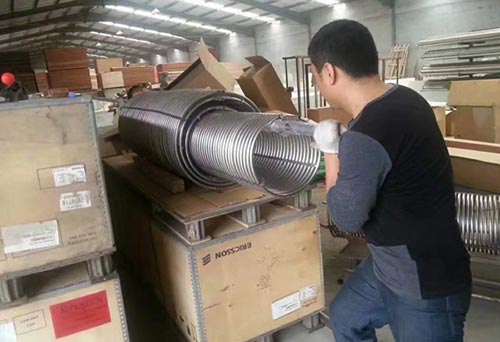Stainless Steel Tubing Coils: Uses, Benefits, and Applications
Stainless steel tubing coils are a versatile and durable solution for many industries, providing an efficient way to handle fluids, gases, and heat transfer. These coils are favored for their high resistance to corrosion, temperature extremes, and mechanical stress.
What is Stainless Steel Tubing Coil?
A stainless steel tubing coil is a continuous length of stainless steel tube that has been wound into a spiral or coil shape. This coil can be used for various applications where flexibility, corrosion resistance, and strength are essential. Stainless steel tubing coils are produced from high-grade stainless steel, often in grades like 304 and 316, which offer superior durability and resistance to rust and staining.
Key Benefits of Stainless Steel Tubing Coils
Stainless steel tubing coils offer a range of advantages, making them an essential material in many industries:
- Corrosion Resistance: Stainless steel is known for its exceptional resistance to rust and corrosion, making it ideal for harsh environments, including those with exposure to chemicals, moisture, and high temperatures.
- Durability: These coils maintain their strength and integrity under high-pressure and high-temperature conditions, ensuring long-lasting performance.
- Flexibility: The coiled design allows for easy handling and installation, especially in tight spaces or areas requiring flexible configurations.
- Hygienic: Stainless steel is easy to clean and maintain, making it the preferred choice in industries like food processing and pharmaceuticals.
Applications of Stainless Steel Tubing Coils
Stainless steel tubing coils are used across various sectors due to their versatility. Some of the most common applications include:
Heat Exchangers
Stainless steel coils are widely used in heat exchangers, where they facilitate efficient heat transfer between fluids or gases. Their resistance to heat makes them perfect for managing thermal processes.
- Applications: HVAC systems, industrial cooling systems, power plants.
Fluid and Gas Transport
These coils are also used for transporting fluids and gases in both residential and industrial settings. Their corrosion resistance ensures that the materials being transported do not degrade the tubing over time.
- Applications: Chemical processing, oil and gas industry, water treatment plants.
Medical Equipment
In the medical industry, stainless steel tubing coils are used for various purposes, including the manufacture of surgical tools, diagnostic equipment, and medical devices.
- Applications: Medical gas lines, catheter tubes, diagnostic machines.
Food and Beverage Industry
The hygiene and resistance to corrosion of stainless steel make these coils ideal for use in food and beverage processing systems, where cleanliness is critical.
- Applications: Beverage production, dairy processing, food storage systems.
Factors to Consider When Choosing Stainless Steel Tubing Coils
When selecting stainless steel tubing coils for a specific application, keep these key factors in mind:
- Grade of Stainless Steel: Different grades of stainless steel offer varying levels of resistance to corrosion, temperature, and mechanical stress. Choose the right grade based on your environment.
- Diameter and Thickness: Ensure the tubing coil has the correct diameter and wall thickness for your application to handle the desired fluid flow and pressure.
- Coil Size and Flexibility: Consider how much space you have for installation and whether you need the tubing to be flexible or rigid.
Conclusion
Stainless steel tubing coils are an indispensable component in many industries due to their corrosion resistance, durability, and versatility. Whether used in heat exchangers, fluid transport systems, or medical devices, they provide a reliable solution for challenging environments. By understanding their key benefits, applications, and selection criteria, businesses can make informed decisions when integrating stainless steel tubing coils into their operations.
Previous: >> How much does coil tubing cost? Next: >> What material is used for coil heat exchanger?







